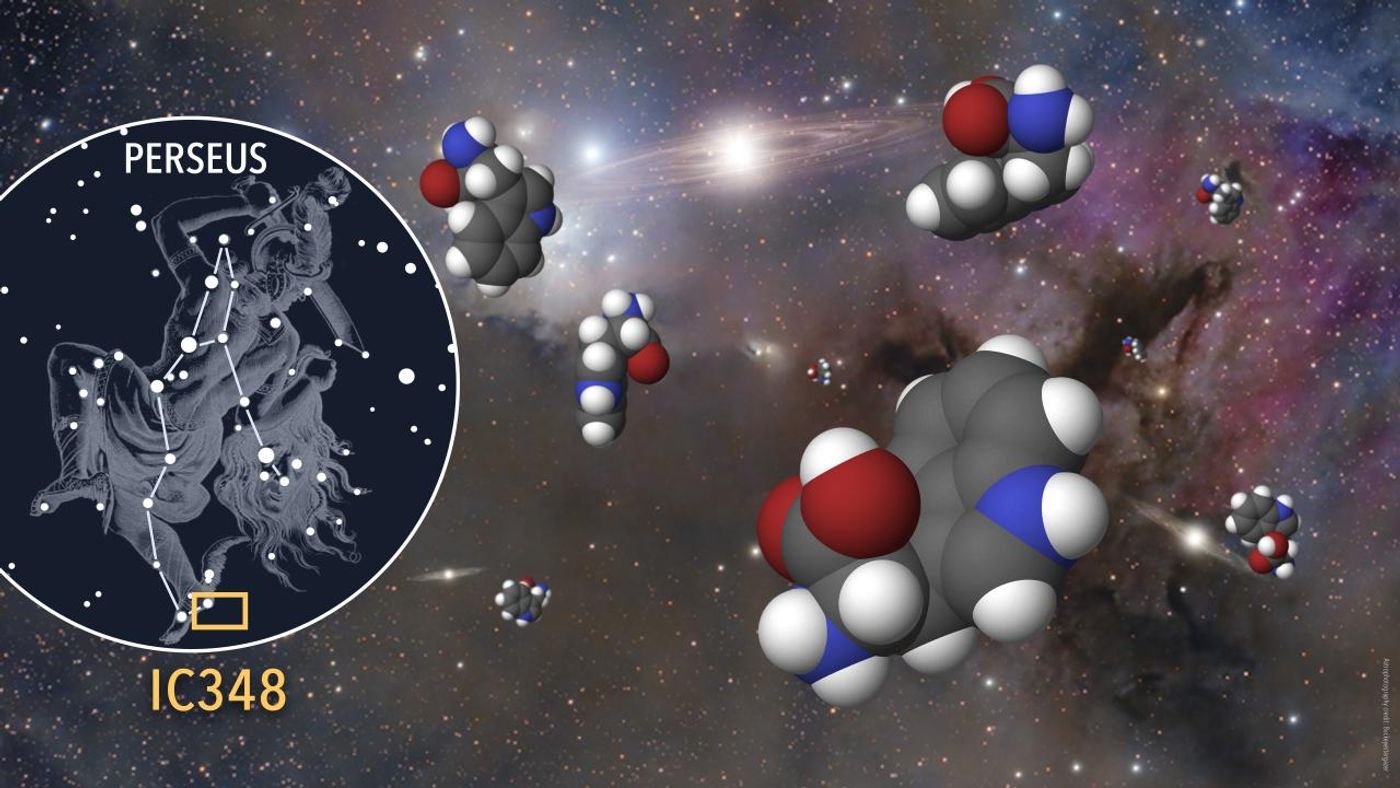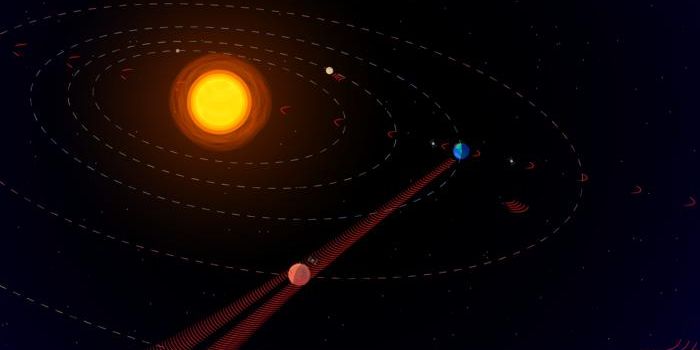Key Amino Acid for Life Found in Star-Forming Region
A total of 20 amino acids have been deemed to be key for life to exist on Earth, with tryptophan being one of them. Now, a recent study published in the Monthly Notices of the Royal Astronomical Society used data from the now-retired Spitzer Space Telescope to identify 10 infrared emission bands of tryptophan within a star-forming region of space known as IC 348, which is located approximately 1,000 light-years from Earth. This profound study holds the potential to help scientists better understand how life throughout the universe forms and where we might find it.
Artist illustration of tryptophan molecules residing in the star-forming region, IC 348. (Credit: Gabriel Pérez Díaz (IAC))
“IC 348 is an exceptional star formation region and an extraordinary chemical laboratory; thanks to its proximity to Earthy we can carry out some of the most sensitive searches for molecules in the interstellar medium,” said Dr. Susana Iglesias-Groth, who is a researcher at the Instituto de Astrofísica de Canarias (IAC) and sole author of the study. “The novelty of this work is that tryptophan has never before been detected in the interstellar medium, and furthermore, in spite of decades of research, there has been no confirmed detection of other amino acids in any other star formation region.”
For the study, Dr. Iglesias-Groth measured infrared emission lines that reside within the core of IC 348 that exhibit a positive correlation with similar emission lines that have been measured in laboratory experiments. Additionally, the study notes these same emission lines have also been found in more than 30 locations that were studied by Spitzer, as well, which could indicate tryptophan could exist in widespread amounts throughout space.
This study builds on recent research conducted by Dr. Iglesias-Groth that identified carbon dioxide, water, acetylene, hydrogen cyanide, polycyclic aromatic hydrocarbons, fullerenes, and hydrogen cyanide, to name a few.
Going forward, Dr. Iglesias-Groth recommends observing protoplanetary discs and protostars in mid-infrared wavelengths to gain better insights into how such amino acids could have formed on an early Earth. As noted, tryptophan is one of 20 key amino acids for life to exist on the Earth, with others being lysine, valine, histidine, and leucine, to name a few.
Where else will researchers discover amino acids in the universe, and could they help us better understand how life formed on the Earth and throughout the universe? Only time will tell, and this is why we science!
Sources: Monthly Notices of the Royal Astronomical Society, Wikipedia, Instituto de Astrofísica de Canarias (IAC), Instituto de Astrofísica de Canarias (IAC) (1), MedlinePlus
As always, keep doing science & keep looking up!









